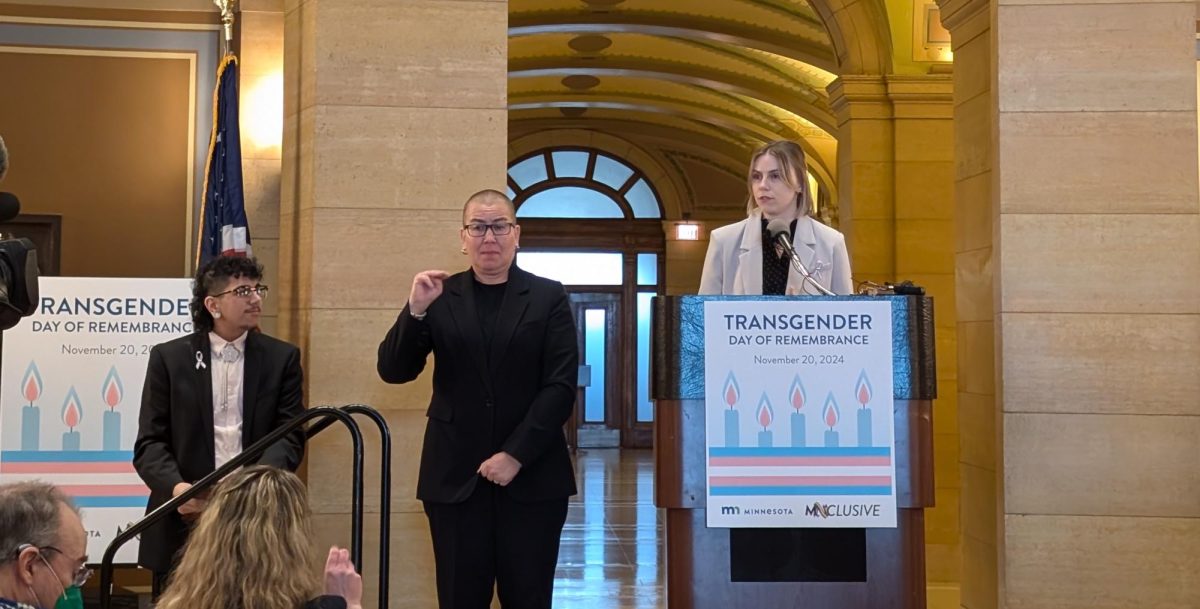The University of Minnesota’s Office for Equity and Diversity announced the departure of Associate Vice Provost Virajita Singh on Feb 8.
Singh recently accepted a position as the Minneapolis Institute of Art’s (MIA) first chief diversity and inclusion officer. Her work as Associate Vice Provost included securing the University’s designation as an Asian American & Native American Pacific Islander Serving Institution and supported the University’s Women’s Center and the Gender and Sexuality Center for Queer and Trans Life.
In addition, Singh is widely recognized for her work in the Diversity Community of Practice (DCoP), a group of University faculty and staff that aims “to share innovative strategies that ensure successful implementation of equity and diversity goals at the University of Minnesota,” according to their website.
This year, the DCoP will host its ninth annual Diversity Data Deep Dive symposia. In these conferences, participants “utilize qualitative and quantitative data to advance institutional equity and diversity goals,” according to the website.
Before serving as Associate Vice Provost, Singh’s work centered around architecture and design. Singh earned her degree in Mumbai and first practiced architecture in rural communities in India. After coming to the University, she founded the Design for Community Resilience Program which serves communities in Minnesota, specifically rural areas.
On her website, Singh describes herself as “a committed artist.” She served as senior research fellow and adjunct faculty member in the College of Design.
“I am a very interdisciplinary oriented person,” Singh said. She added that her diverse professional interests mutually support one another.
Teddie Potter serves as a clinical professor for the school of nursing, and she worked with Singh in the creation of the Diversity Data Deep Dive symposia.
“When I came to the University,” Potter said, “I thought, ‘Wow, look at this. Everybody for social change is here in one place. Isn’t this cool?’ It didn’t take me long to realize they’re all here, but nobody knows each other. They’re off doing their own individual work.”
Potter praised Singh for the ways she worked to solve this problem, saying, “She networks so effectively [and] has this wonderful ability to connect dots across the University.”
About the formation of the Diversity Data Deep Dive symposia, Potter said, “We brought a design thinking lens to how we create social movements.”
Though Singh served in an administrative role at the University, her previous work and scholarship centered around design, which had a large influence in her work as Associate Vice Provost.
Singh described design thinking as a five-step process of empathizing, defining, ideating, prototyping and testing.
She said she values design thinking for its ability to help people claim agency and look toward the future.
“There’s been so many things that have been a result of historical inequities, marginalization and oppression, but we in this moment are creating the future,” Singh said. “If you’re not aware of that, and we’re only looking to the past and berating the past, then we are not putting our energy on changing the future.”
Potter described Singh as “hopeful and visionary.”
Vic Massaglia serves as the director of the Career and Professional Development Center at the School of Public Health.
He worked closely with Singh in the DCoP and said that whenever people speak about Singh they “will light up because she is an amazing person … She captures what it means to be authentic. She brings this grace, this style, this openness to her … She’s wicked smart. She’s done all these things, but then she is very authentic with people and patient and compassionate.”
Potter said she had worked with Singh for the past seven or eight years.
“Virajita is one of those unique human beings that you know wherever she goes, whatever community she works with, she’s not leaving you behind. She’ll be bringing you forward into a new space, and so I fully anticipate that the University and the MIA are going to get even closer,” Potter said. “She’s going to think of ways that our communities can work together, and so it really isn’t about goodbye as much as celebrating a new chapter in her life.”
Singh echoed similar sentiments, saying, “I am sad to leave. I’ll miss them, but I think we will also stay connected because I see this as the next chapter of my work.”
In her new role, Singh will work to increase cross-cultural museum accessibility at the MIA.
“They have just an incredible collection with 90,000 works of art that represent world cultures … but the question is how many communities actually know that they have access to that,” Singh said.
She is also interested in diversifying the museum staffing and reckoning with issues surrounding the history of museums, including colonization and artifact theft.
Patricia Izek serves as the Equity, Diversity and Inclusion Consultant for the University’s Office of Human Resources and she worked with Singh on the DCoP.
“[Virajita] was very capable of establishing not only the colleague, but the friend,” Izek said. “Just to be clear, they will not be able to replace Virajita. They will fulfill the position, and we will welcome the individual, but they will not replace her.”













